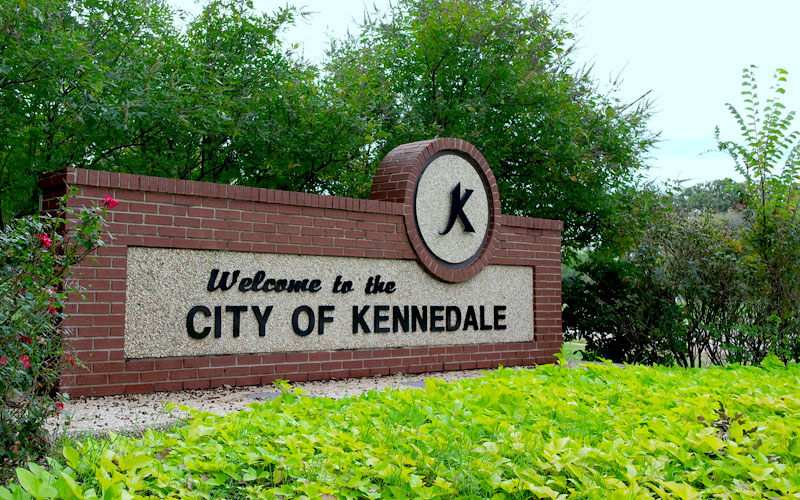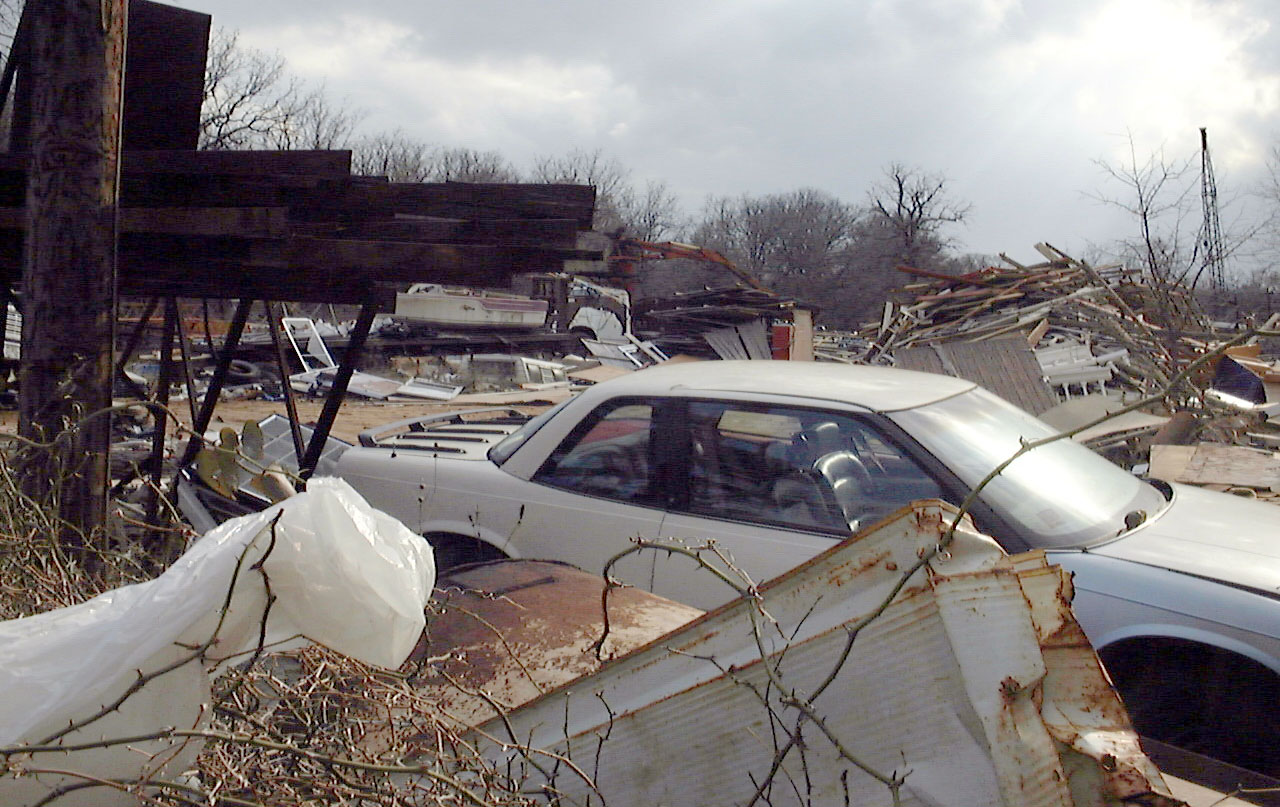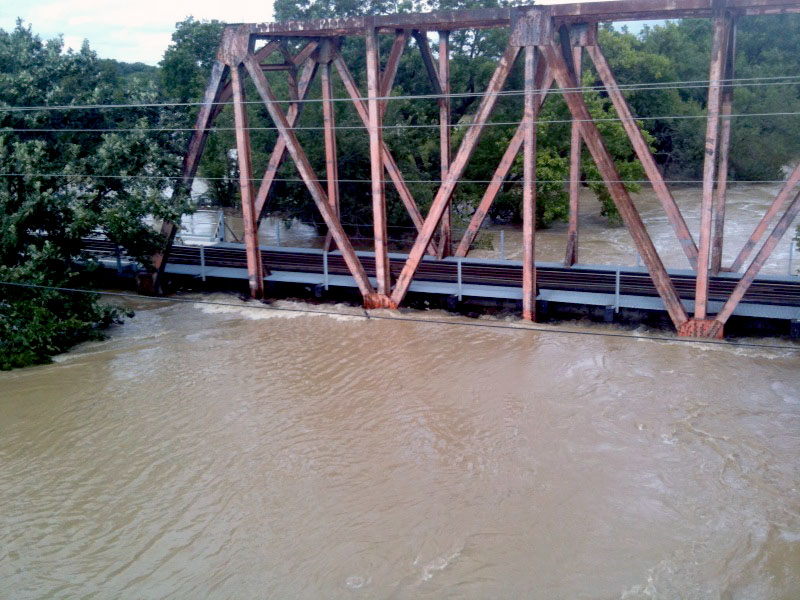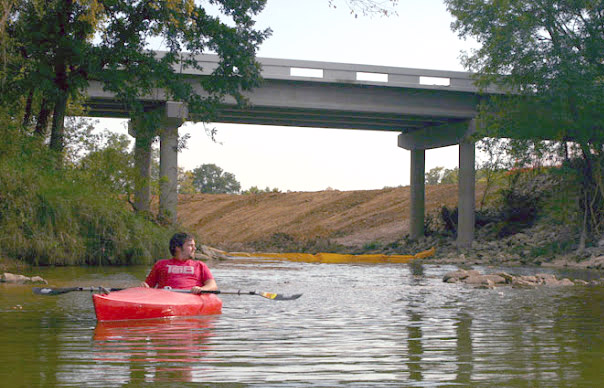by Ben Young Landis
Ben Young Landis is a freelance science communicator and a contributing writer for Creative Science Writing and the Thriving Earth Exchange.
“Where Everybody Is Somebody” reads the local high school’s motto in Kennedale, Texas, a cozy community of some 8,000 residents. Recently the town sought a new somebody — somebody with serious environmental science chops, a knack for navigating water quality regulations and a passion for solving project management puzzles.
With a “help wanted” notice and matchmaking support from the Thriving Earth Exchange of the American Geophysical Union, Kennedale found the expertise it needed to step up to one of its most persistent problems: a complex brew of pollution, drinking water and floods.
A Creek Runs Through It
Kennedale is both an integral part of the greater Fort Worth and a world unto itself. A “Bark in the Park” event for families and dogs and a fundraising concert with Patsy Cline and Elvis Presley impersonators dotted the city calendar one recent month. Residents enjoy the relaxed rhythms of a small town while the wattage of the 7-million-person Dallas-Fort Worth-Arlington metropolitan hub glows nearby.

Mayor Brian Johnson and City Manager Bob Hart have sought out scientists via TEX to help with Kennedale’s water quality questions. Image courtesy of the City of Kennedale.
“I can leave City Hall right now and be in downtown Fort Worth in 15 minutes,” smiles Bob Hart, Kennedale’s City Manager. “I can get to the Rangers ballpark and the Cowboys stadium in 25 minutes.
The city straddles a segment of Village Creek, a tributary of the Trinity River watershed — which eventually pours into the Gulf of Mexico more than 270 miles (430 km) away. While the river brings natural beauty and recreational opportunities, Hart says over the past decade water quality and flood control issues have bubbled to the surface.
“When people come out and look at Village Creek, they’re struck by the quality of the natural habitat here, particularly for an urban area,” says Hart. “Locals go fishing, kayaking — you can kayak all the way to Lake Arlington, actually.”
But in 2013, Village Creek was listed by the U.S. Environmental Protection Agency (USEPA) as “impaired” due to high E. coli levels. In addition, heavy metal contamination is suspected around the Kennedale reaches of the creek. Compounding the situation are the basin’s tendency to flood every few years — and the septic tanks and car salvage yards planted along Kennedale’s portion of the floodplain.

Village Creek and its floodplain run through the City of Kennedale. The city hopes to redevelop and clean up this entire parkway and address related flooding and pollution issues. Image courtesy of the City of Kennedale.
Lake Arlington, a 42,600 acre-feet reservoir partially supplied by Village Creek, serves as the drinking water supply for more than 500,000 people. Managing the health of this interconnected resource has been a focus for regional partners — the City of Fort Worth, the City of Arlington, the University of Texas at Arlington, the Trinity River Authority, and the Texas Commission on Environmental Quality.
The water quality issues affecting Village Creek pegs Kennedale squarely in the center of this regional conversation. But while his big-city counterparts have access to teams of staff and private consultants, Hart’s resources in Kennedale are considerably more limited. Hart sought a creative solution to find the top-caliber scientific advice and strategic planning he’d need to pinpoint sources of pollution and fulfill his commitment to managing Kennedale’s portion of the watershed.
Searching for the Systems-Savvy Scientist
“What we really need is someone who has the breadth of understanding of the environmental laws and government regulations we have to resolve, and the political limitations for different solutions,” says Hart, an active member of the International City/County Management Association (ICMA). It was through his service on the ICMA Sustainable Communities committee that Hart learned about the “Scientist Wanted” platform of the Thriving Earth Exchange.
For Kennedale to hold up its end of the regional partnership, the city needs to understand the factors driving the bacterial and metals pollution in Village Creek. But water sampling plans and GIS models can only take Kennedale part-way — their true challenge is translating these data into practical, implementable solutions in step with residents, local businesses, neighboring municipalities, and state and federal offices.

Privately operated metal scrap yards are currently sited on the Kennedale floodplain, and their relationship with water quality issues in Village Creek is unstudied. Image courtesy of the City of Kennedale.
“The science is a big component, but understanding the legalities and the state and federal regulatory environment are huge component,” says Hart. “So if you look at it from a systems perspective, what we’re looking for is someone to pull all three parts together.”
A big-picture expert with deep experience in environmental project management would be the prize for Kennedale. Someone to bridge the science with all the realities of managing a living, breathing, working city — scrap yards, drinking water, Elvis bands and all.
As a result of the TEX announcement, the city recently found their match in Alexander Sun, Ph.D., a research scientist for the Bureau of Economic Geology and the University of Texas at Austin. With degrees in Civil and Environmental Engineering, he’s expert at analyzing water flows and identifying the sources of contaminants. But perhaps more importantly, he’s devoted to leveraging scientific research to support on-the-ground, practical decisions about environmental challenges and water resource management — just the sort of decisions Bob Hart must make every day.

Village Creek during a flood in 2010. Historically, Kennedale experiences flooding every three to four years. Image courtesy of the City of Kennedale.
“As a professional city manager, I’m fascinated by the challenges presented by this hugely complex project,” says Hart, in his sincere, Texas drawl. “And at a personal level, I’m dedicated to protecting and restoring Village Creek. I understand how significant this project will be, not only to our community, but to the region as a whole.”

